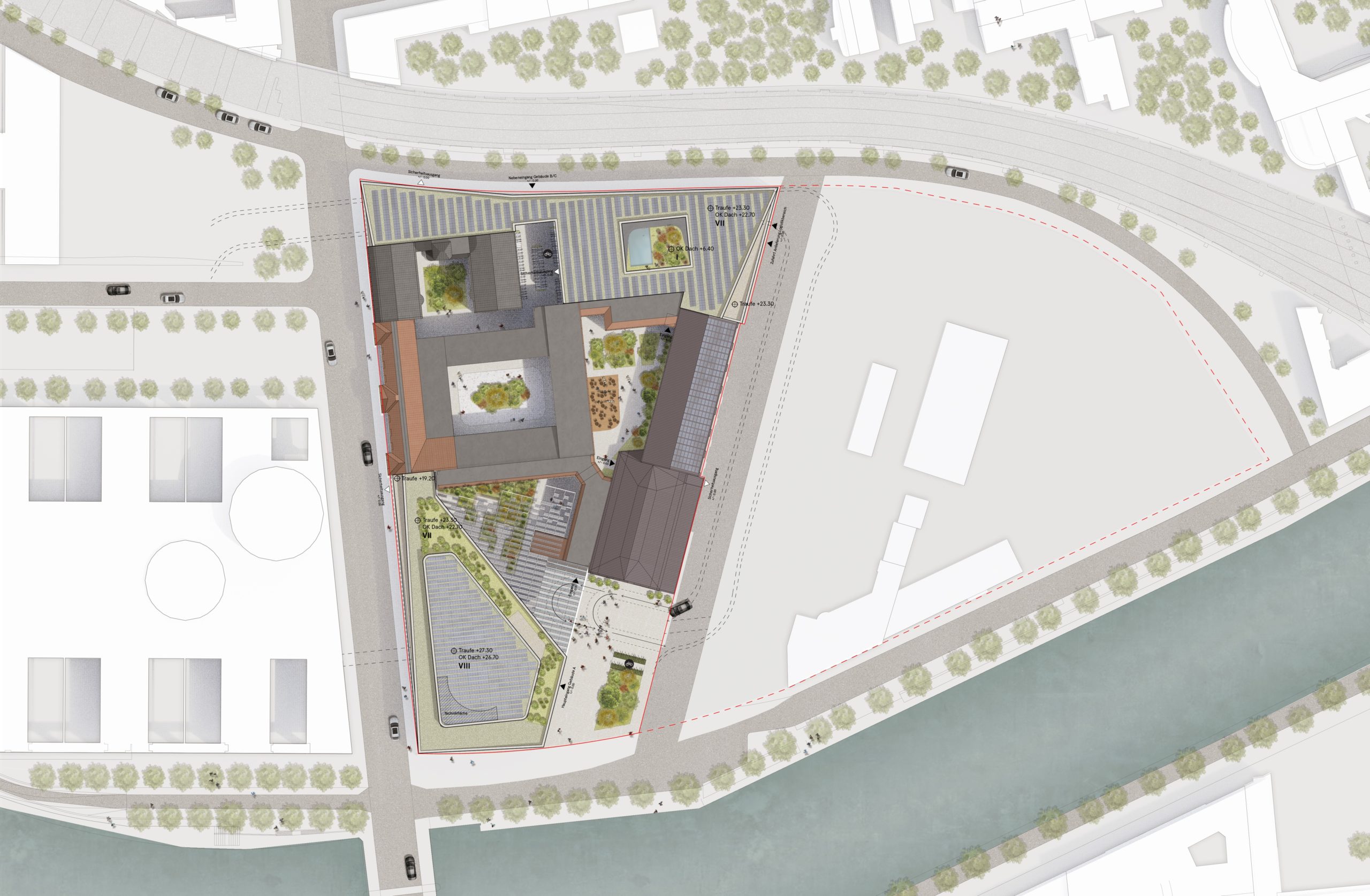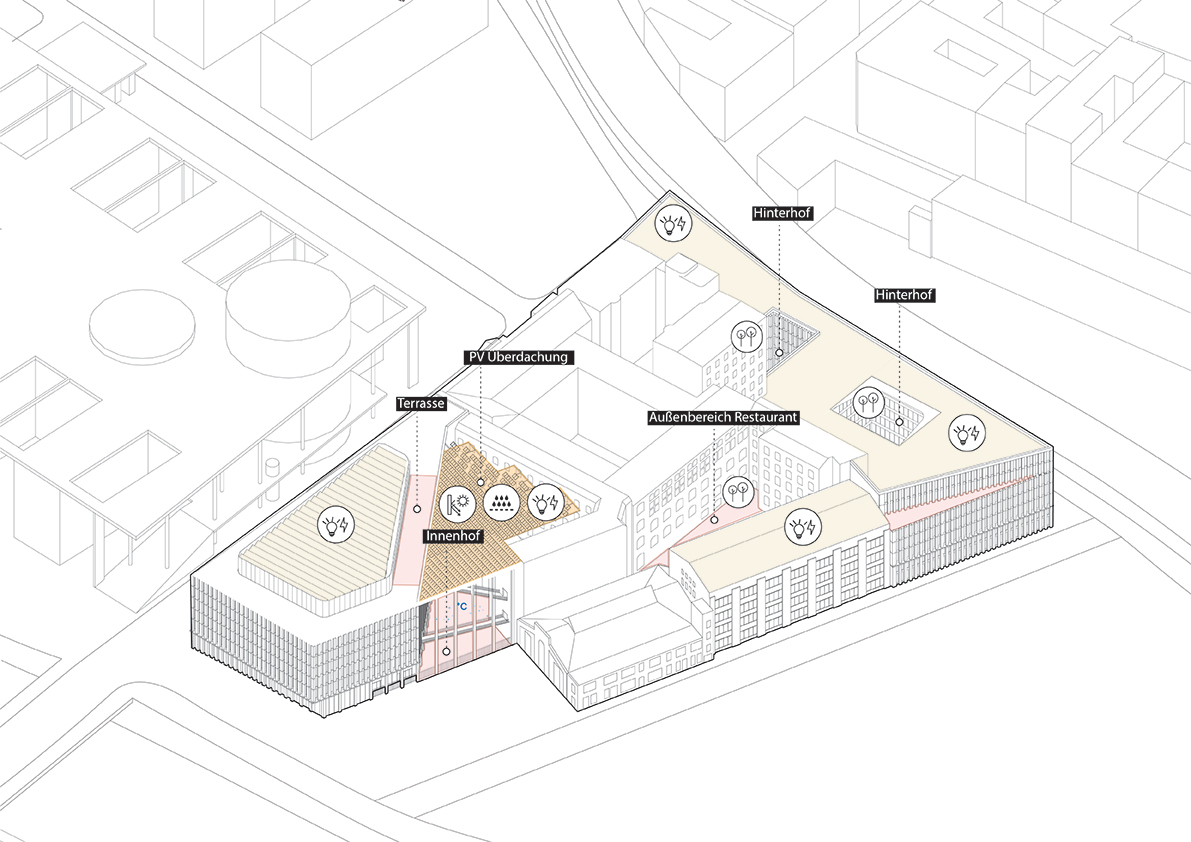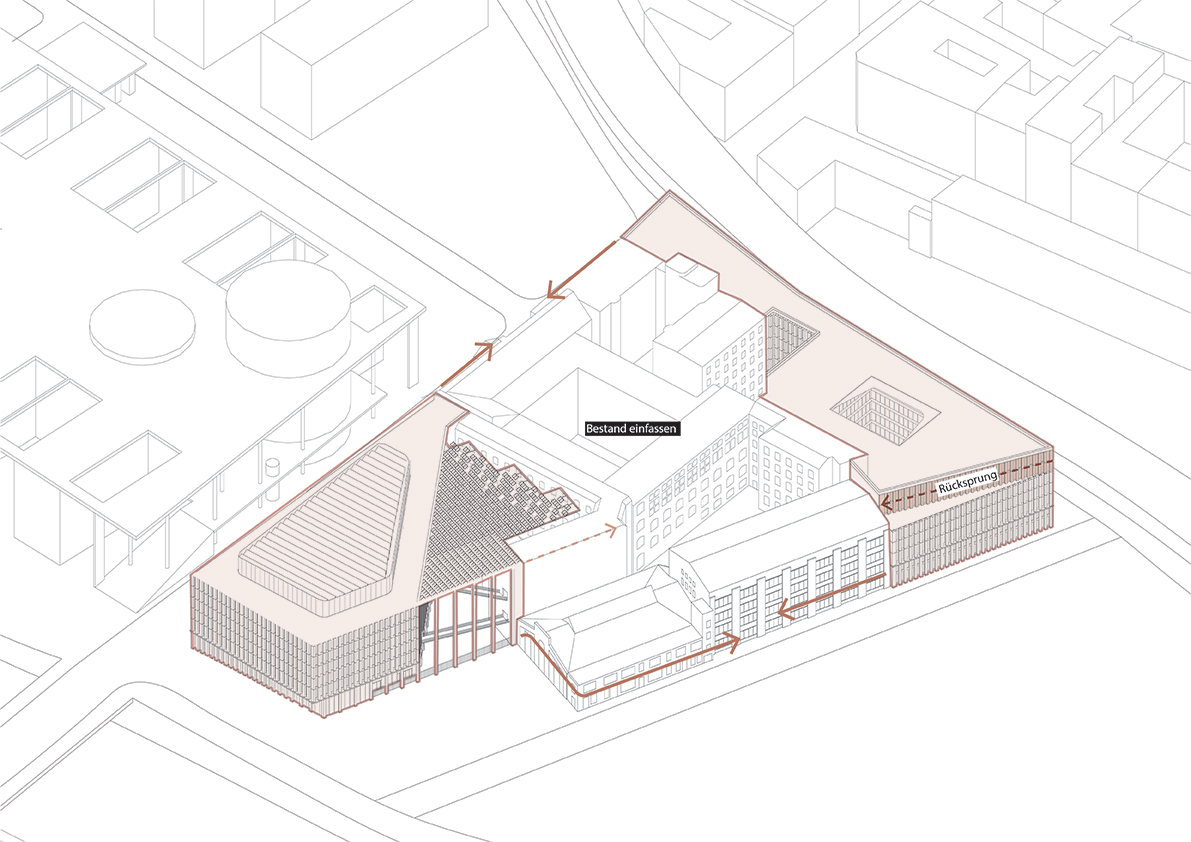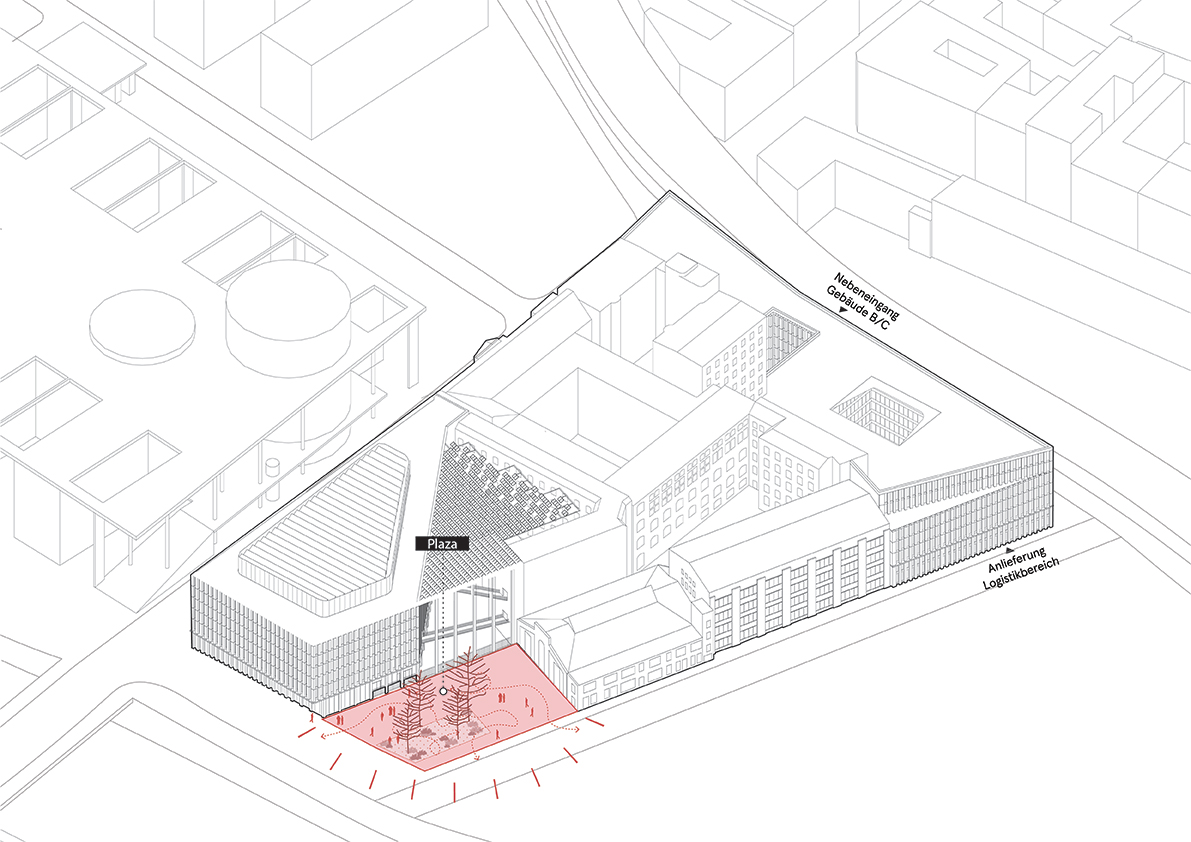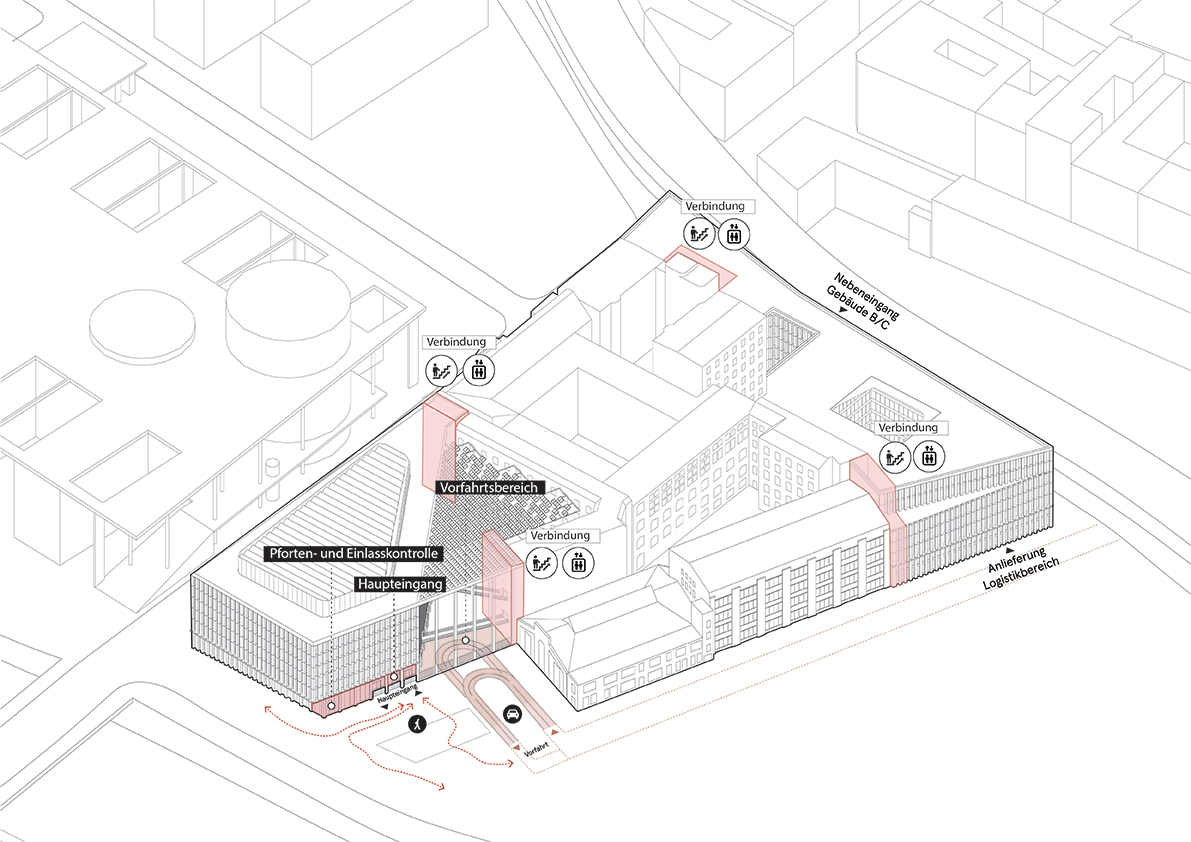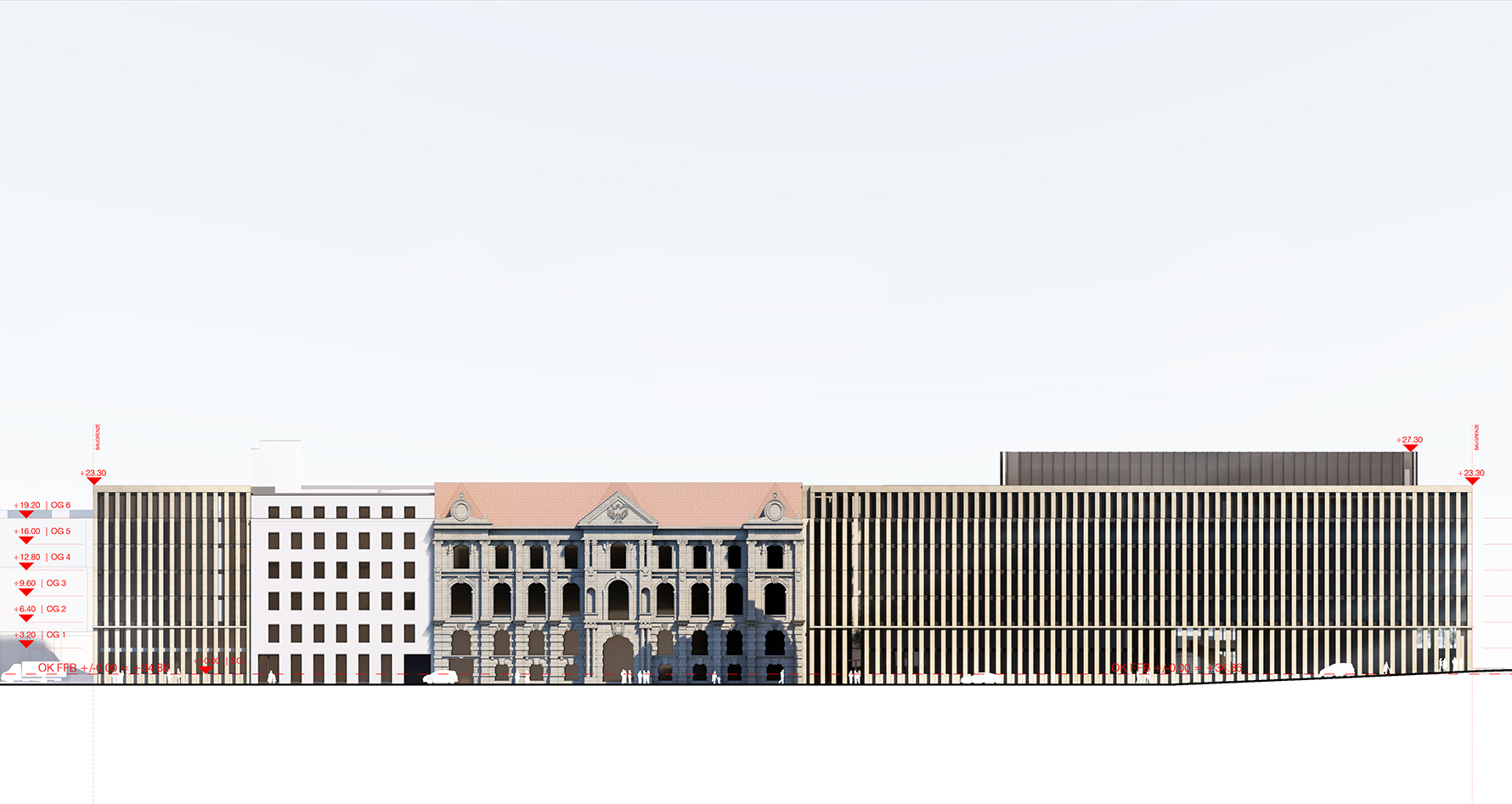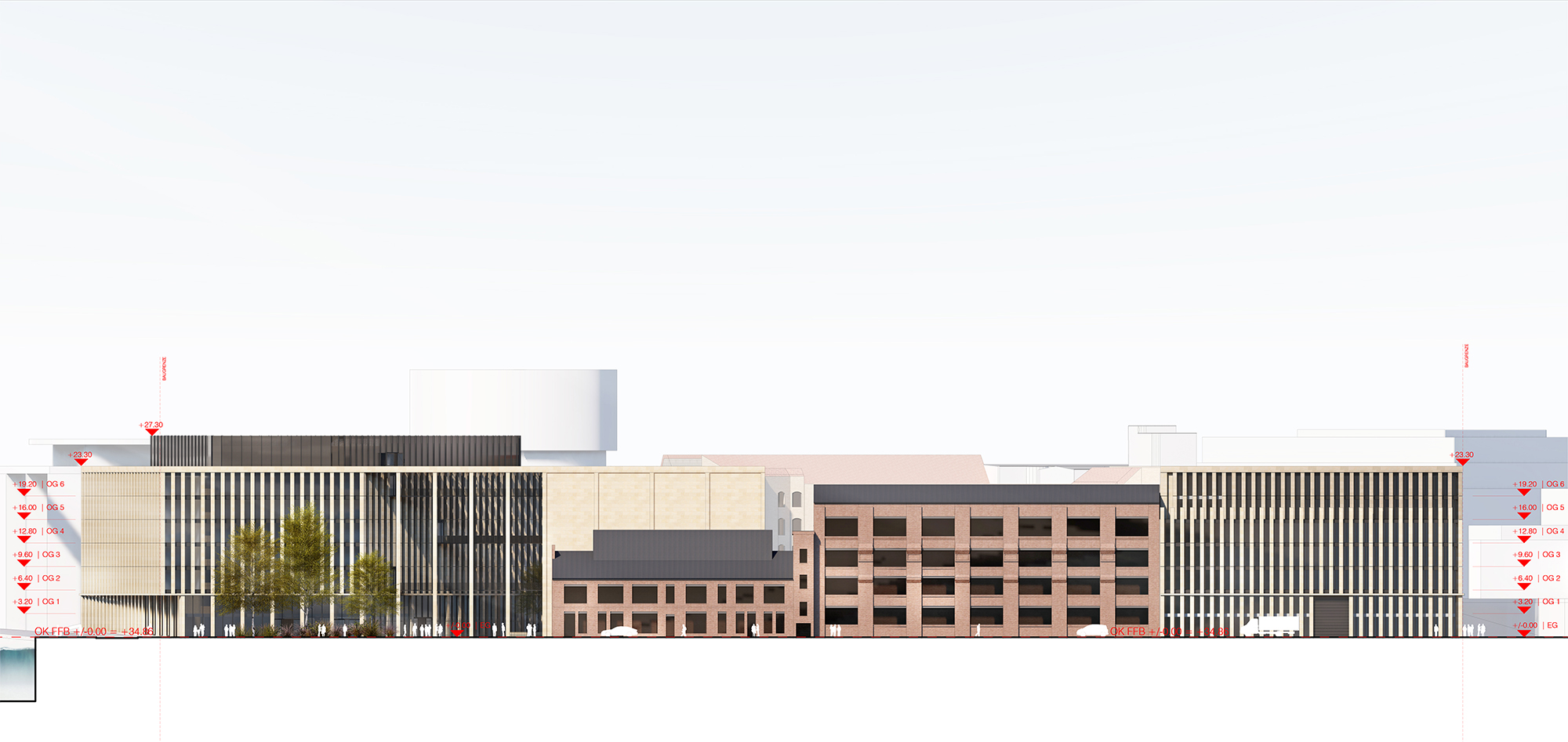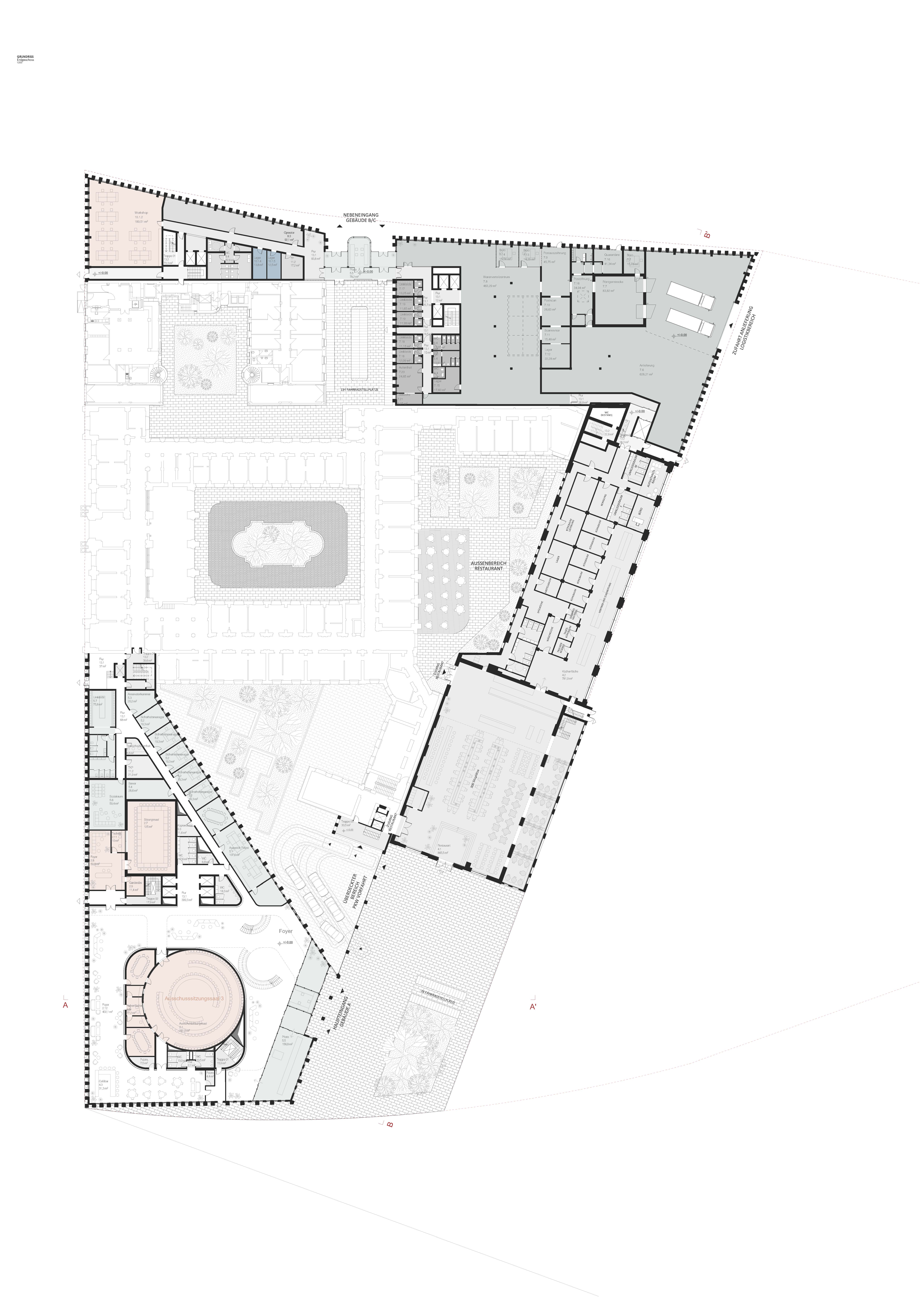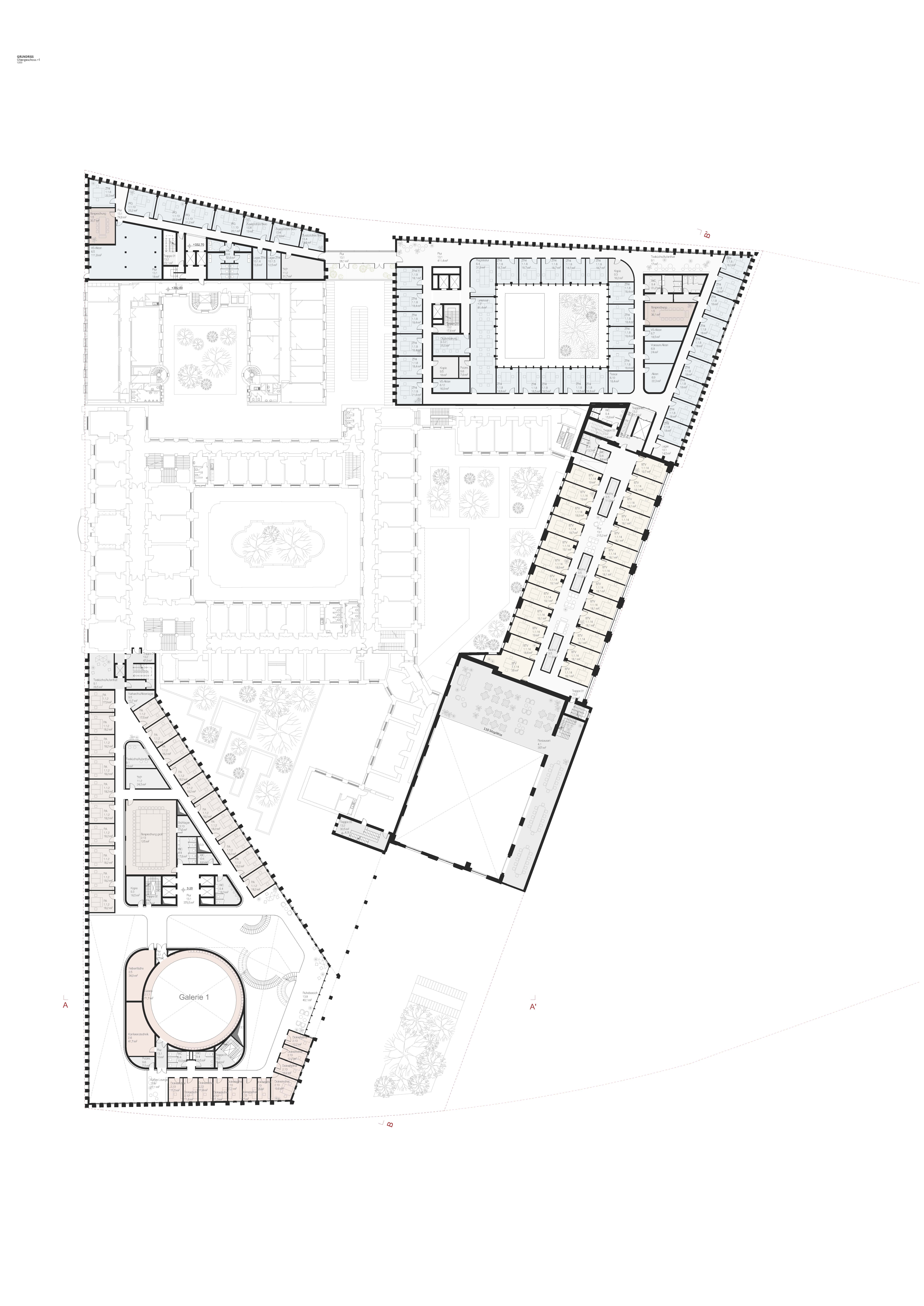In few other cities do the various phases of their own history – whether constructive or destructive – manifest as clearly as in Berlin. The cityscape is the result of diverse influences and is marked by the deep scars left by war, post-war era, the construction of the Berlin Wall, and the reunification. These gaps provided space for creative use, turning Berlin into an experimental field for urban development and culture. The area of the Luisenblock is one such gap, a space where the “Band des Bundes” and historical buildings intersect.
By preserving the architectural heritage on the southern side, the historical buildings (boiler house and workshop building) gain value and integrate into the overall concept. The resulting green plaza extends to the boiler house, establishing visual continuity between the past and present. This public space, within a densely populated urban landscape, serves as a natural extension of the building, promoting interaction and sociability. The project successfully balances openness and communication without compromising security. Emphasizing dimensions, especially in the reinterpretation of Berlin’s inner courtyards, the courtyard becomes the architectural centerpiece, offering a sheltered outdoor space accessible from multiple buildings. Transparency between the public space and the courtyard creates an illusion of continuity and openness.



